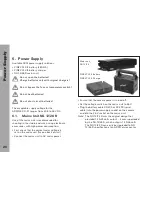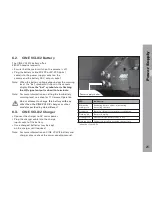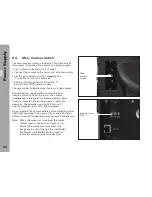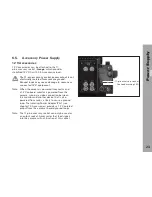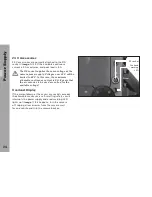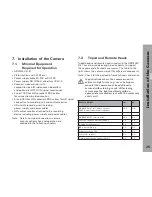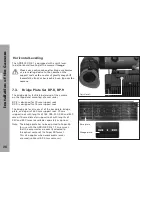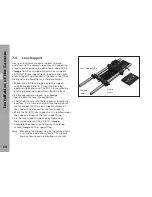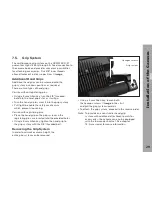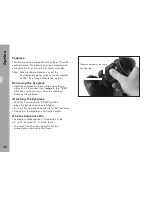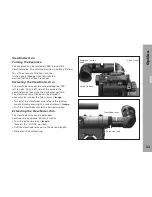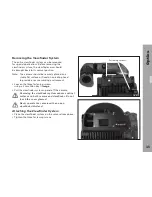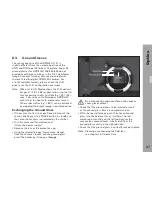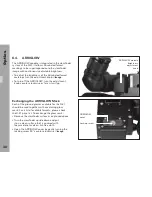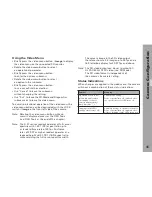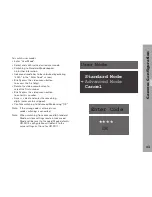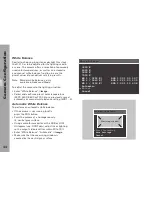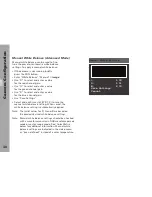
O
p
tic
s
31
Remove the mounted lens or protective cap from
•
the lens mount receptacle by turning the bayonet
ring
➪
image
counter-clockwise as far as it will go
and then pulling out the lens or protective cap.
Never put your fingers into the lens mount
receptacle.
Push the lens to be used into the
•
lens mount receptacle
without catching it at the edges. One of the four slots
on the lens mount must fit over the index pin
➪
image
.
Press the lens flat onto the
•
lens mount receptacle
and pull the bayonet ring clockwise to tighten.
Always perform a dust check after changing
lenses to make sure no dust has settled on the
sensor cover glass!
Note: When no lens is attached to the camera
for an extended period of time, use the
protective cap to avoid dust entering the
lens compartment. See chapter 15: Camera
Care for dust check instructions.
Note: The sophisticated design principle of the camera’s
optical module delivers outstanding images
with a cinematic look and feel, but also makes
the imager sensitive to contamination. Dust
particles that have settled on the sensor cover
glass during a lens change may become visible
as dark spots in the output image, similar to lint
leaving marks on exposed film. The degree of
this effect depends on the aperture of the lens.
8.2. Viewfinder System
The ARRIFLEX D-21 has an optical reflex
viewfinder system with interchangeable ground
glasses. The viewfinder is adjustable in two axes,
laterally extendable for left eye operation and
shows illuminated frame lines (ARRIGLOW).
The viewfinder image stays upright and correct
left-to-right when the viewfinder is swiveled
within the main axis
➪
image
. Warning signals
(BAT, ASY) are reflected into the viewfinder.
Note: When the camera is turned on, the mirror
shutter stays in the position it was set to
before the camera was turned off. If no
image can be seen through the viewfinder,
briefly press the PHASE button twice to
rotate the mirror into viewing position.




